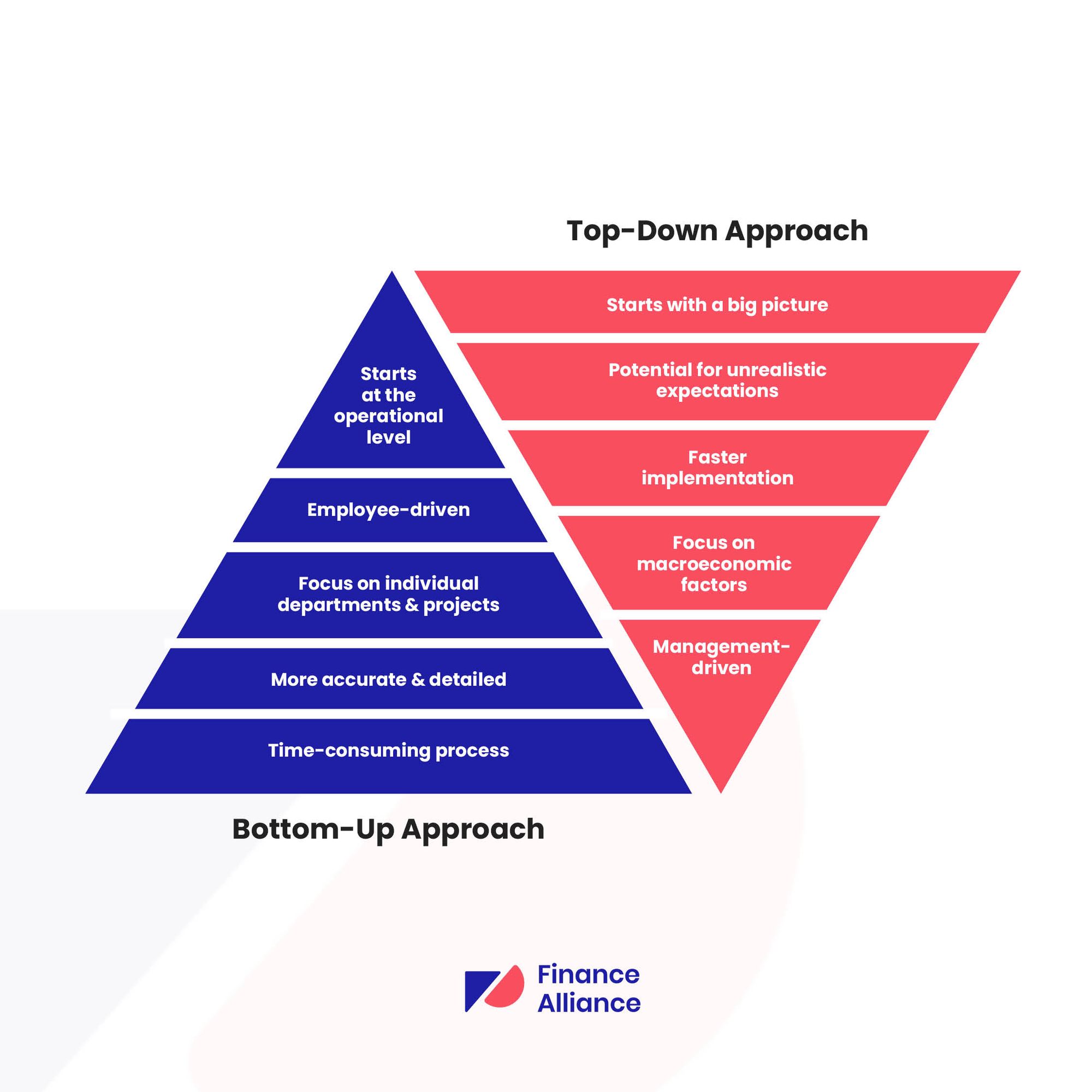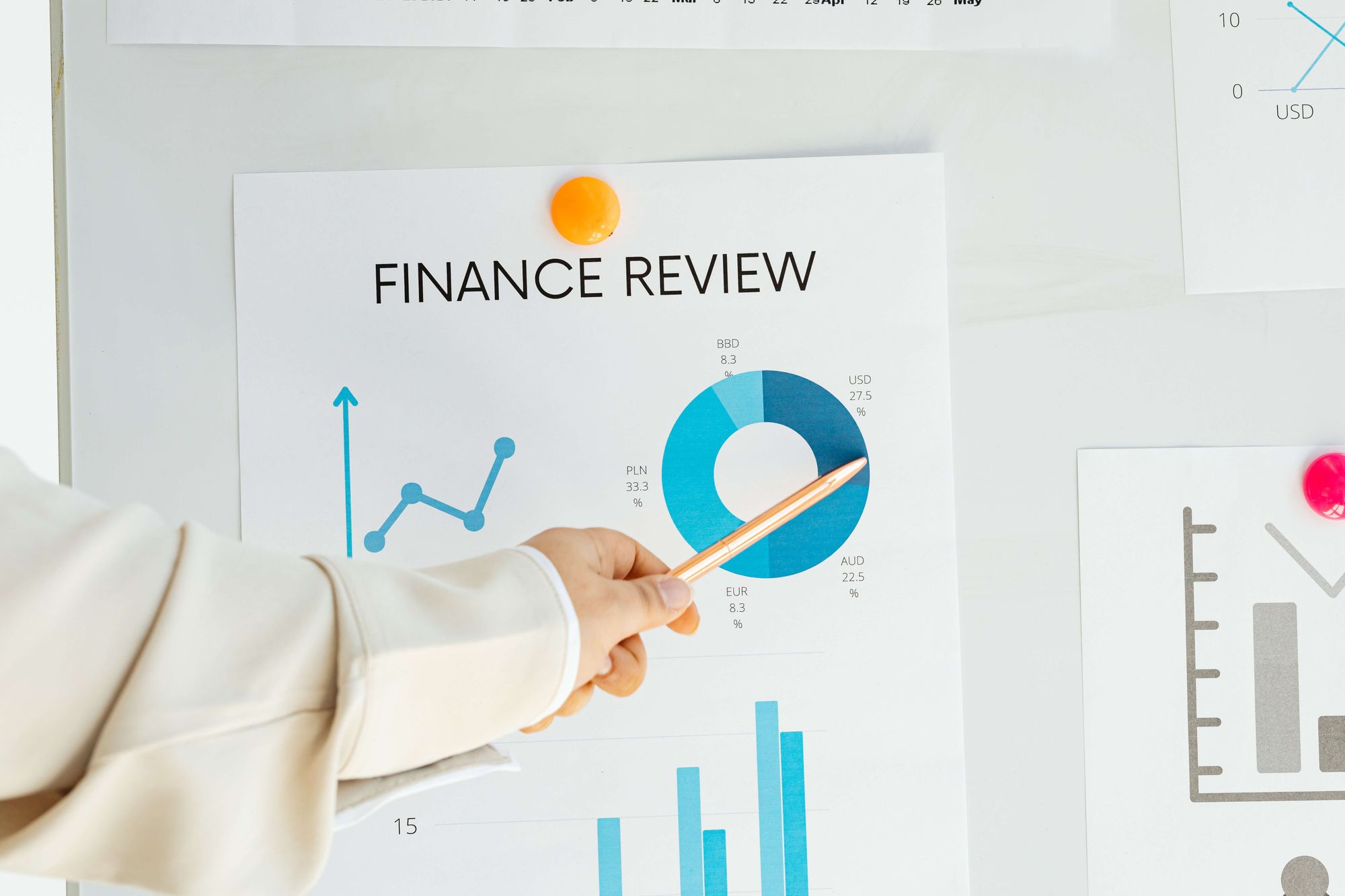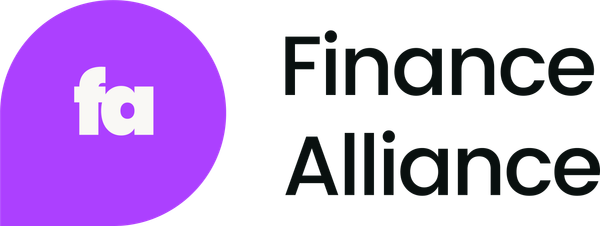What is the difference between a rolling forecast vs static forecast?
Static forecasts are like fixed financial blueprints. You lay out expected revenues, costs, and profits at the start of the year, and even if things change in the market, the forecast stays the same.
Rolling forecasts, on the other hand, are highly adaptable. For instance, if your sales skyrocket in the first quarter, you can adjust the forecasts for the following months accordingly.
Having this adaptability at your fingertips can prove useful for accurate financial planning and yet many finance pros remain adamant that static forecasts are the way to go.
But… are they right? Or is it time to move away from traditional methods of forecasting?
We want to help you decide by diving deep into rolling forecasts, their flexibility, responsiveness to real-time data, and how these features can directly contribute to your company's strategic decision-making process.
So, if you’re ready to roll with the changes in the financial forecasting landscape, let's get stuck in.
Types of rolling forecasts
There are a few main variations of rolling forecasts commonly used in financial planning and analysis (FP&A). They include:
- Standard rolling forecasts: Think of this as a moving window that always covers the next 12 months. As one month ends, like when July wraps up, the forecast rolls to include the next July. It gives a constantly updated year-long view.
- Quarterly rolling forecasts: Similar to standard, but we're talking in quarters here. Each quarter, the forecast period moves forward by one quarter, keeping a constant 12 month outlook.
- Continuous rolling forecasts: Instead of fixed monthly or quarterly updates, this forecast operates in real-time. Whenever new data enters, it adjusts.
- Extended-horizon forecasts: Some businesses like to gaze farther – maybe 18 or even 24 months ahead. Even though it's a long view, they keep it fresh with regular updates.
- Driver-based forecasts: This forecasting method uses key performance drivers to predict future revenues and costs. The main drivers of a business, such as number of customers, sales per customer, marketing expenses, etc., are identified and then used to estimate future financial performance.
Instead of a fixed period, like an annual forecast, a rolling forecast 'rolls' with the times.

You can use a rolling forecast to predict a variety of figures and areas of the business. For example…
A rolling cash flow forecast focuses on your company's liquidity and how much cash is coming in and going out.
A rolling financial forecast is more holistic than the cash flow version. This one encompasses all financial aspects - revenues, expenses, assets, and liabilities. It's the bigger financial picture that continually evolves.
A rolling sales forecast concentrates on sales projections. It’s vital for marketing and inventory decisions. You can think of it as a pulse check on customer demand and market trends.
A rolling forecast budget adjusts throughout the year. As situations change, so does the budget, making it a more adaptive financial tool.
FYI: You may come across the term ‘running forecast’. This is a synonym for rolling forecast, underscoring its continuous, 'running' nature. But it’s essentially the same as a classic rolling forecast.
The rolling forecast formula
A rolling forecast formula is a straightforward concept. For every period that passes, a new one is added to the end of the forecast.
So, if you're using a 12-month rolling forecast, at the end of January, February becomes your starting point, and the following January is added, maintaining a consistent 12-month outlook.
When is a rolling forecast needed?
- Business agility: In rapidly changing industries, where the landscape can shift in just a few months, it’s essential to have a forecast that evolves to reflect the latest conditions.
- Long-term projects: For projects that span several months or even years, it's useful to always have a clear forward-looking window that updates regularly.
- Managing seasonality: Businesses in sectors with pronounced seasonality, like retail or agriculture, can benefit from a rolling forecast to adjust projections in real time.
Why is a rolling forecast useful?
- Real-time adaptability: As businesses face unexpected challenges or opportunities, rolling forecasts can be adjusted in real time, ensuring they’re based on the latest data.
- Continuous planning: Instead of yearly budgeting and planning, companies can continually refine their strategies, allowing them to stay ahead of the curve.
- Stakeholder confidence: For stakeholders, whether they're investors, partners, or board members, seeing an always-current forecast can instill greater confidence in the business's management and direction.

Who benefits from rolling forecasts?
For companies that face swift currents of change, rolling forecasts help ensure they steer clear of risks and are ready to seize opportunities as they come.
Let's dive into which businesses can best harness their power…
Dynamic market players
If your company thrives in environments that are always shifting due to seasonality, growth spurts, or economic swings, rolling forecasts are your best bet. An example would be a retailer that needs to frequently update sales forecasts.
Skyrocketing startups
With rolling forecasts, growing startups can keep pace, ensuring they're always ahead of the curve.
Project-based businesses
For those in the project domain - like consultants or construction magnates - revenue comes in bursts, often aligned to project milestones. Rolling forecasts help these businesses sync their finances with their project timelines.
Highly leveraged companies
Companies with complex debt structures involving covenants should use rolling forecasts to closely monitor cash flows and covenant compliance.
Companies with long budgeting cycles
If you're used to the tradition of annual budgets, rolling forecasts offer a breath of fresh air. No more waiting a year to rejig those numbers; you can now adapt on-the-go.
Companies adopting agile frameworks
Agile teams want rapid insights to guide decisions. Rolling forecasts provide updated data more aligned with agile sprints.
Knowing when to use a rolling vs a static forecast
Recognizing the right moment to shift from a static forecast to a rolling forecast can make all the difference in financial planning.
You’ll notice some cues to reveal when it’s time to leave static forecasts in the past and move to rolling forecasts.
For example, if you notice your business environment or internal operations are changing more frequently than your static forecast can accommodate, take it as a sign it’s time to consider a more adaptive approach.
The same goes for when your business is in a phase of rapid growth or expansion. This is a perfect example of when a rolling forecast offers the responsiveness you need.
Some other signs of when to use a rolling forecast include:
Economic uncertainty: If your industry or region faces volatile economic conditions or is susceptible to unexpected external factors (like natural disasters or geopolitical events), rolling forecasts can provide a clearer lens.
Complex projects: Are your revenues and costs associated with long-term, complex projects? Rolling forecasts can help you keep pace with project-based financial fluctuations.
Feedback loop: If you're consistently adjusting and tweaking your static forecasts or if there's a significant deviation between forecasts and actuals, it's an indication that a rolling model might be more suitable.
Strategic flexibility: Businesses aiming for a more agile strategic approach, where pivots and shifts are common, will find rolling forecasts more aligned with their goals.
Stakeholder expectations: If investors, board members, or other stakeholders demand more frequent and updated financial insights, rolling forecasts can meet this need.
Technological infrastructure: If you've recently upgraded your financial systems or have access to real-time data analytics, you're in a prime position to harness the benefits of rolling forecasts.
Budgeting fatigue: If the annual budgeting process feels like a drain, both in terms of time and relevance, introducing a rolling forecast can inject efficiency and relevance back into the process.
Competitive landscape: If competitors are rapidly innovating, launching new products, or entering and exiting markets, maintaining a rolling forecast can help you stay a step ahead.
Remember, while rolling forecasts offer adaptability, they also demand more frequent attention. Weigh the benefits of real-time adaptability against the resources required for regular updates. Sometimes, a hybrid model – combining elements of both static and rolling forecasts – might be the best fit.

How to create a rolling forecast
The way one finance team creates a rolling forecast may differ from another. But the steps are often similar, following a sequential order to help create the best possible rolling forecast model.
Here are the typical steps to create and maintain a rolling forecast for a company's finances:
1. Set clear objectives
Begin by mapping out your destination. Why are you embarking on this journey of forecasting? Determine who will be relying on these projections and for what decisions.
2. Choose forecast frequency
Decide on the duration your forecast will cover and establish its recurring increments. For instance, if you opt for monthly increments spanning 12 months, as each month concludes, it's phased out, and a new month takes its place.
3. Zoom in or out on details
Depending on the vastness of your trek (length of the forecast), you might want to pack light (less detail) or be more prepared (detailed). Especially when the stakes are high, ensure precision and comprehensive detailing.
4. Pinpoint key value drivers
Instead of trying to conquer every aspect of the business, identify those pivotal to your journey's success. Recognize the elements that historically and currently drive value in your business and industry.
5. Gather and verify data
Create a rolling forecast model to analyze historical data and project future revenues, expenses, capex, etc. Identify key cash flow drivers. Determine what data is needed from each business unit or department to populate the forecasts. This may include sales projections, hiring plans, operating costs, etc.
Remember, the data you rely upon for your forecasts is your sustenance. Ensure its quality is top-notch, sourced from credible origins.
6. Compile forecasts and create scenarios
Foresee various paths your journey might take based on certain conditions and drivers. This foresight allows preparation for various eventualities, ensuring better adaptability. As the winds shift, adjust your path accordingly.
7. Measure, assess, and adjust
As you journey on, periodically check your actual path against the forecasted one. Are there any deviations? If so, work to understand the reasons and recalibrate. This continuous checking ensures you're always on the right path or equipped to pivot when necessary.
You may also want to share results with stakeholders and executives. Discuss variances, opportunities, and risks.
8. Move the model forward
Move the model forward one period, update inputs, and compile a new forecast on the predetermined frequency. Continue to compare the actual results to your forecasts to improve the process and inform future projections.
Tips: Creating a rolling forecast in Excel
Microsoft Excel is an excellent platform for building rolling forecasts due to its flexibility and power for financial modeling.
With Excel, you can leverage historical trends, driver-based modeling, and sensitivity analysis to create robust 12-month or longer rolling forecast models. The "rolling forecast excel" structure allows new data to be input each period to move the forecast forward seamlessly.
Teams can use "12-month rolling forecast excel templates" tailored to their needs while benefiting from Excel's shared language and accessibility. These templates allow new time periods to be appended while previous periods drop off, maintaining a 12-month rolling projection.
Some tips to help create better rolling forecasts in Excel include:
- Data gathering: Start by collecting historical data on sales, expenses, and any other relevant metrics.
- Setup timeframes: Decide on the forecasting period (e.g., 12 months) and set up columns for each month/quarter.
- Formulas: Use the OFFSET and COUNTA functions to dynamically select the most recent data points.
- Drop-off logic: Implement logic where, as a new month/quarter is added, the oldest one drops off.
- Input section: Designate a section of the worksheet for inputting new data as it becomes available.
- Visuals: Incorporate charts/graphs that update automatically with the rolling forecast for a visual representation.
- Scenario analysis: Use Excel's scenario manager for what-if analysis based on different variables.
- Consistent updating: Regularly input new data to keep the forecast current and rolling.
- Error checks: Implement conditional formatting to highlight any anomalies or unexpected results.
- Protection: Protect cells with formulas to avoid accidental edits, while leaving input cells open for data entry.

Why are rolling costs difficult to predict?
Predicting rolling costs can be difficult because they’re influenced by multiple factors that can change at any time.
The very nature of businesses, especially those operating in fast-paced environments, means that variables like demand fluctuations, supply chain disruptions, regulatory changes, and economic shifts can all impact costs.
Not only that, but these variables often interplay in complex ways, making their combined effects even harder to anticipate.
While rolling forecasts aim to offer a more adaptive approach to financial planning, the inherent volatility and interconnectedness of business factors can make rolling costs elusive to accurately predict.
Rolling forecast best practices
To optimize the process and get the most accurate and actionable insights, consider these 10 best practices:
Embrace flexibility
The very essence of a rolling forecast is its adaptability. Business environments change, and your forecast should be nimble enough to adjust accordingly. Instead of being anchored to fixed periods, it should flow with real-time data and updates.
Prioritize key metrics
While it's tempting to include every imaginable data point, it’s wiser to focus on the key performance indicators (KPIs) that drive your business. Determine which metrics matter most to your organization's success and build your forecast around them.
Consistent data collection
Uniformity in data gathering is paramount. Ensure that the data you use is consistently sourced, processed, and interpreted. Any discrepancies can lead to skewed results.
Collaboration is key
Financial forecasting isn’t just for the finance department. Engage multiple departments and stakeholders, as they provide varied insights that can lead to a richer, more comprehensive forecast.
Regularly review and revise
The "set it and forget it" approach won't do. Regularly compare your forecasts with actual outcomes. Understand discrepancies, learn from them, and refine your forecasting model accordingly.
Simplicity over complexity
While detailed forecasts can be insightful, they can also become overly complex and difficult to navigate. Aim for a balance: detailed enough to be actionable, yet simple enough to be comprehensible.
Leverage technology
Take advantage of forecasting software and tools available today. They can automate data collection, offer advanced analytical capabilities, and provide visualization aids, streamlining the entire process.
Scenario analysis
Forecasting isn’t about predicting a single future but understanding a range of possible outcomes. Engage in scenario planning to assess how different factors might influence outcomes. This practice helps in preparing for both opportunities and threats.
Continuous learning
Like all skills, your forecasting abilities will improve with experience and reflection. Create a feedback loop where you constantly evaluate past forecasts, learn from mistakes, and continually refine your techniques.
Educate and communicate
Ensure that everyone involved understands the purpose, process, and outcomes of rolling forecasts. Transparent communication helps align the organization around shared objectives and insights.
FAQs: Rolling forecast best practices
What is the difference between a forecast and a rolling forecast?
A traditional forecast is usually set for a fixed period, like a fiscal year, and doesn't change until the next period. A rolling forecast, on the other hand, is continuously updated, typically by dropping the oldest period and adding a new one at the end.
How do you create a 12-month rolling forecast?
Start with data for the current month, then forecast the next 11 months. Each subsequent month, drop the oldest data and add a new forecast month at the end, ensuring you always have a 12-month view.
What is the definition of a rolling forecast?
A rolling forecast is a financial projection method where forecasts are continuously updated by extending the forecast period by a set interval, usually monthly or quarterly.
Why is Excel recommended for rolling forecasts?
Excel offers flexibility, familiarity, a rich array of formulas, visualization tools, and integration capabilities, making it adept for creating and updating rolling forecasts.
Level up your budgeting & forecasting skills with our certified course
Enhance your skills in budgeting and forecasting with expert techniques used by top companies worldwide. Learn from Christian Wattig, an experienced FP&A leader, and gain insights into the five essential phases of budgeting and the forecasting strategies that help businesses stay ahead.
With Christian as your guide, you’ll get hands-on experience navigating the key steps of annual budgeting, from Pre Kick-Off to Final Alignment, and gain the confidence to create accurate forecasts that support strategic decision-making.
Enrol now to start mastering the financial tools that make you an indispensable part of your organization!



 Follow us on LinkedIn
Follow us on LinkedIn




